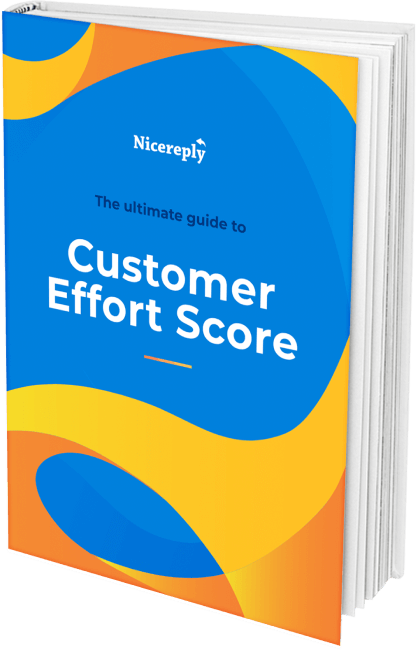A Little Bit About Popup Surveys: The Good, The Bad, and The Ugly
Popups are those annoying little windows that cover your viewing area of a website you just visited. Yeah… annoying. So why should anyone use them? Most of you have heard Sir Winston Churchill’s “Democracy is the worst form of government, except for all the others.” It is a bit of a similar situation. Are popups the best? No. But do we have anything better? Not really.
Start your day
with great
quality
content
The Good
Though you need a bit of technical knowledge or support to put them on your site, they are still quick and easy to implement. If you are handy enough, they allow you to gather data while customers are still engaged with your website or product. Their response rate is unparalleled. Depending on the tool you are researching, popup surveys perform easily two, three, or even more times (ranging from 10-30% response rate) than their subtler cousins: slide-out surveys or feedback buttons (with a 2-5% response rate).
(Slide-out: a small widget on the side or bottom of the page that can be triggered by various actions such as scrolling, clicking on a specific button, or hovering over the widget.)
The Bad
Popups get a lot of bad rep from all the “You are the millionth viewer of this page!” scam or similar click baits. Many customers might close them out of habit without even glancing at the content itself (just imagine the response rates if you could avoid this!). If set up incorrectly, popups can be a high-ranking source of frustration.
The Ugly (Yet Surprisingly Satisfying)
The ugly part is the in-between space of how to bring out the good and mitigate the bad. Popups are really powerful, but oh-my do they come with responsibility… For more on that, keep reading.
Or if you’d rather learn more about website surveys in general, or you are just looking for a muse on what to ask the people that interact with your website, check out article Best Website Survey Questions [+Examples].
Introduction to Customer Effort Score
Let’s talk about Customer Effort Score (CES) for a moment. If you’re interested in the background of CES and how and why it works, you can download our Ultimate Guide to Customer Effort Score.
For the purposes of this article, all you need to know is that CES asks a simple question: “How easy was it for you to solve your problem today?” It’s a metric that measures how much effort a customer has to put in to get their problem solved. The less effort customers have to expend, the better the score. We all want our customers to have a great experience and not be frustrated, so let’s work on improving our CES scores!
Strategies for Implementing CES Popup Surveys (the ugly makeup)
Let’s recap what we’re dealing with:
- Popup surveys can be annoying.
- Visitors may overlook them due to bad previous experiences.
- We’re focusing on “How easy was it for you to solve your problem today?” (though the following tips are generally applicable for other types of surveys as well).
To overcome the dislike of popup surveys, stick to the following simple principles:
Define your objectives: Determine what you hope to achieve with your popup survey. Have you identified a bottleneck where visitors start leaving, but you don’t know why? Is your customer support team overwhelmed even though you have an extensive knowledge base users should be able to use instead? Are you unsure about the seamlessness of your onboarding? Regardless of your reasons, be mindful of the question you are seeking answers for?
Timing: I cannot stress this enough – timing is everything. You want to display the survey while visitors are still engaged, but not when it could disturb them from their current course of action. This way, the survey can appear as a part of the experience instead of a disturbance. Some good examples would be:
- Survey your visitors after a purchase or conversion. It’s an ideal time to capture feedback from customers as they have just interacted with your brand and have a fresh experience to report on.
- Use an exit intent survey. Many issues with popups come from the fact that they tend to appear after a short time spent on a page or even right when the page is opened. Showing a survey when the user is about to exit gives them an opportunity to provide feedback before they leave without disrupting their experience. This can be especially useful for surveying your knowledge base experience.
- If you want to verify a specific process or interaction on your website, consider triggering a popup survey when the visitor finishes a monitored task. That way, the experience is still fresh, and though the popup grabs the attention, it feels relevant.
Frequency: Limit the number of times a survey popsup for a visitor. Keep this in mind both for repeating the same survey and for separate surveys on different pages. No one wants to answer the same question repeatedly in short time, and having a survey popup on every other page gets tedious even faster.
💡Quick Tip
- Don’t forget to check out our article on How to Create an Effective Popup surveys.

I’ve got some feedback – what now?
Once you’ve received feedback, the next step is to analyze it and take action. Breaking down feedback into actionable data is key to making improvements. Look for repeating patterns and take note of any suggestions for improvement. Even if your CES score is low, using customer feedback removes the guesswork from the equation. When customers see that you’ve taken their feedback seriously and made changes, they’re more likely to become loyal customers.
It’s important to keep track of your metrics over time, even if you have good scores. If you notice a decrease, it’s time to identify the root cause and take corrective action. On the other hand, if you notice an increase in scores, it’s important to identify what you did right and replicate that success elsewhere.
Check out the customer story of Man Crates which is a great example of how to combine metrics to get a more complete picture. CES is a valuable metric, but CES + CSAT is even better. Adding NPS to the mix can give you a truly holistic view of customer satisfaction.
Word in conclusion
Although popup surveys can be annoying, when used wisely and sparingly, they can become engaging and invaluable for your feedback loop. Just like fighter pilots rely on continuous feedback loops to improve their performance and avoid mistakes, businesses must prioritize feedback to identify areas for improvement and enhance customer experience. By collecting and analyzing customer feedback through tools like popup surveys and using it to make targeted changes, you can continually refine your processes and stay ahead of the competition.











